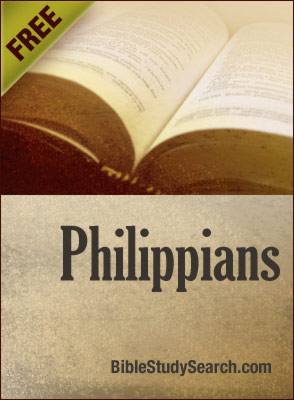
The City of Philippi.
It belonged to Thrace until 358 B. C., when it was seized by Philip, king of Macedon, father of Alexander the Great It was the place where Marcus Antonius and Octavius defeated Brutus and Cassius (42 B. C.). which defeat overthrew the Roman Oligarchy, and Augustus (Octavius) was made Emperor. Is was on the great highway through which all trade and traders going eastward and westward must pass, and was, therefore, a fit center of evangelism for all Europe. It was the place where the first church Of Europe was established by Paul on his second missionary journey, A. D. 52.
Paul's Connection with the Church. By a vision from God he went to Philippi on the second missionary journey (Acts 16:9-12). He first preached at a woman's prayer-meeting, where Lydia was converted. She furnished him a home while he continued his work in the city. After some time there arose great opposition to him and he and Silas were beaten and put in prison, but through prayer they were released by an earthquake which also resulted in the conversion of the jailer (Acts ch. 16). He perhaps visited them again on his journey from Ephesus to Macedonia (Acts 20 2 Cor 2:12-13; 7:5-6). He spent the Passover there (Acts 20:6) and received messages from them (Phil. 4:16). They also sent him assistance (Phil. 18) and he wrote them this letter.
The Character and Purpose of Philippians.
It is an informal letter with no logical plan or doctrinal arguments. It is the spontaneous utterance of love and gratitude. It is a tender, warm-hearted, loving friend and brother presenting the essential truths of the gospel in terms of friendly intercourse. He found in them constant reasons for rejoicing, and now that Epaphroditus who had brought their aid to him was about to return from Rome to Philippi, he had an opportunity to send them a letter of thanks (Phil. 4:18). It is remarkable for its tenderness, warnings, entreaties and exhortations and should be read often as a spiritual tonic.
Date.
It was written by Paul during his imprisonment at Rome, about A. D. 62.
Outline of Epistle to the Philippians.
Introduction, 1:1-11.
I. Paul's Present Situation and Feeling. 1:12-26.
II. Some Exhortations, 1:27-2:18.
III. He Plans to Communicate with Them, 2:19 end.
IV. Some Warnings, ch. 3.
1. Against Judaizers, 1-16.
2. Against false professors, 17 end.
V. Final Exhortation. 4:1-9.
VI. Gratitude for Their Gifts, 4:10-19.
Conclusion, 4:20 end.
Study and Discussion Questions for Philippians.
(1) Things in the church for which Paul is
thankful, 1:2-6.
(2) What is said about how the gospel was preached to them, 2:1-16.
(3) Paul's longing to know about them, 3:1-9.
(4) The duties enjoined, 4:1-12.
(5) The second coming of Christ and the resurrection, 4:13-18.
(6) How we are prepared for the great day of his coming, 5:3-10.
(7) The several exhortations in 5:12-22.
(8) The human elements or explanation of Paul's power as a preacher Ch. 2.
(9) The deity of Jesus seen in the book.
